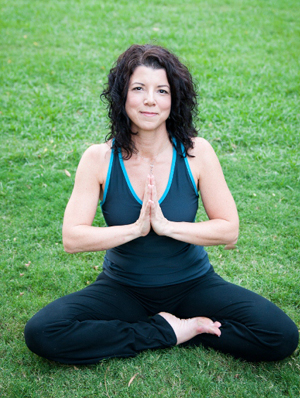
The benefits of meditation are being touted everywhere, from psychological journals to health and fitness magazines to holistic websites and even in mainstream media.
It's one thing to understand and agree with the positive benefits of a meditation practice, but another thing to incorporate it into your busy life. It's kind of like understanding that certain foods are bad for you, but still continuing to eat them until someone gives you an easy and tasty substitute.
Time and again, I hear people complain about their monkey mind and how they just can't stop their thoughts. As if their thoughts were in control of them. That's the first step in meditation—realizing that you do indeed have control over your thoughts. And, no big surprise, it is the main challenge that we all face in beginning a meditation practice.
I have found that it is easier if you can think of the mind as a muscle. Look to the recent Olympic games as an example. The first time Michael Phelps jumped into the pool, he could not break records with his swimming. It took practice, and the focus on a goal. While we won't win any gold medals from meditating, we will gain a peace of mind that makes our day-to-day life much easier and healthier.

So how do we begin training the mind to be quiet, to build the muscle of focus and concentration? We have had plenty of practice in life in studying for exams, preparing for a competition, working toward a goal. We just need to translate the practices that have worked for us in those situations into meditation. Some days it will come easily, some days it will seem impossible.
I, personally, go through periods when I am quiet and nourished by meditation. I also go through periods when I attempt to solve the problems of the world, and then berate myself for failing, all while sitting on the same meditation cushion.
An effective analogy is to think of the mind as a pair of small dogs, who explode into shrill barking at the slightest noise. Demanding quiet will do no good. Instead, acknowledging the dogs with gratitude for what is in their nature and rewarding them for the return to quiet works much better. The same is true during meditation in training the mind to quiet. Like the dogs, the mind is geared to react and protect. Positively acknowledging the mind for doing its job and reminding it of the current goal enables us to refocus with less disruption. Again and again.
It becomes easier with each practice.
So how can you easily fit a meditation practice into your own life? There are many different types of meditation, and it is important to find one that suits your unique qualities. Then you simply set aside five minutes of your day in the morning and evening to sit quietly. That's only 10 minutes in an average day of 960 minutes of consciousness.
Try out the following types and see what works best for you. Set a timer when you begin so that you can relax into the period.

Five Different Focal Points For Meditation:
1. Breath awareness – following the breath as it enters and leaves the body.
2. Visual object – focus the eyes on a candle, a flower, or any other object of significance to you.
3. Mantra – repeating an affirmation or sound to engage the mind.
4. Movement – simple movement, eg. walking or yoga, with focus on placement of feet/body part.
5. Guided/music – listening to recorded instructions or soothing music.
Give it a good focused try, and you will be amazed by what shifts after just 10 minutes a day for a week. Life will be less stressful. You can then use that payoff to pull you forward in your practice.
For more information on specific meditation tactics, please visit my website (robinpatino.com) and sign up to receive additional resources.
















